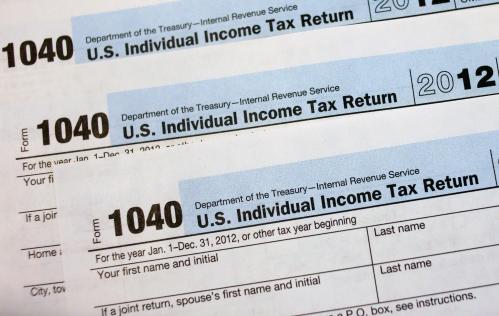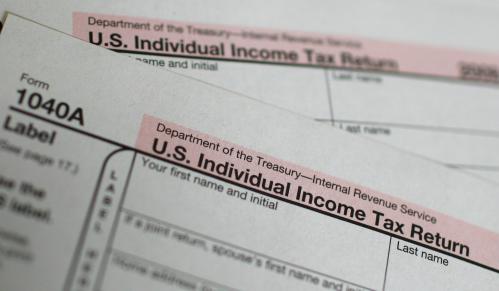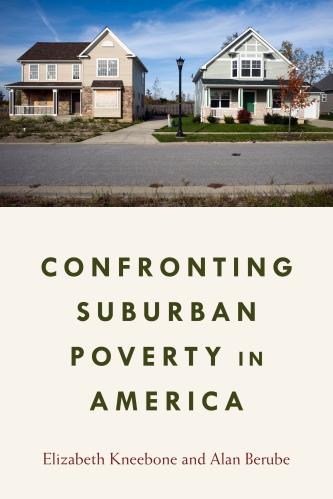There’s been no shortage of post-election analysis on why the so-called white working class voted for Donald Trump. Some analyses credit economic factors like long-term declines in wages and increasing employment uncertainty. Other analyses point to social and cultural attitudes as the source of their support for the GOP candidate.
While questions about working-class politics are interesting, they should not distract policymakers from the need to understand and improve the economic well-being of these families. Notwithstanding current, highly partisan efforts that could undermine that goal, recent research suggests a potentially bipartisan way that the federal government could act to stabilize working families’ finances.
The research comes via the Institute for Family Studies, a small think tank that conducted a focus group late last year of young, white, working-class individuals in southern Ohio, to talk about how the next presidential administration could best help working families. As the Institute’s report describes, the focus group members worked in occupations such as child care, warehousing, food service, and health care administration. Most voted for Trump.
What came through these focus groups most clearly were participants’ concerns around providing for their families. Because they had trouble making ends meet financially, they desired to keep more of their earnings in their paychecks while paying less in taxes:
“They take out $300 of each of my checks,” said the sous-chef, referring to the taxes taken out of his checks every two weeks. His gross income was over $1,000, but he resented the $300 that came out of each paycheck. “You can’t live off that,” he said.
At the same time, the focus group members didn’t think government assistance really helped people like them. They felt that programs like food stamps, Medicaid, and public housing supported people who worked less, and made less money, than they did, which seemed to make it harder to get ahead:
“When we need the assistance like the Medicaid, the food stamps—that kind of stuff—we are just over the income limit,” said the part-time McDonald’s worker.
“I agree, because that story you just told is me and my husband,” said the hospital registrar, who had recently married. She received Medicaid now, but she said that once she told the Medicaid office that she was now married, “they’re going to take my insurance away.”
In short, these individuals want to have more take-home pay, but don’t feel that expanding government assistance will help much.
Yet based on their profiles, it’s likely that most of these focus group participants are already benefiting from one very significant government program: the Earned Income Tax Credit (EITC). In 2016, families with children and incomes under $50,000 could claim a credit of up to $6,300. Unlike some government programs, the EITC goes only to tax filers who work and earn wages. My colleagues Elizabeth Kneebone and Cecile Murray find that 41 percent of EITC-eligible filers in 2015 were white Americans without four-year college degrees.
Indeed, the interviews strongly suggest that some participants received the EITC, since many seemed to have experience in receiving large tax refunds. But several participants noted that those refunds didn’t really address their earnings gap.
“Catch up,” said the daycare worker. “It’s just to catch up.”
“Yep, that’s what I do too,” added the factory worker. “All my tax returns go to pay off stuff.”
“It seems like a Band-Aid over a big wound,” said the manufacturing student about a larger tax return.
“Just cut down on the taxes so we don’t owe money,” added a stay-at-home mom.
The warehouse team leader put it this way: “It seems like if you are getting a larger tax return but you aren’t getting a larger paycheck, they kind of cancel each other out.”
These responses point to something Congress and the Trump administration could do today—without spending a lot more public money—that would increase earnings for these workers and help them avoid falling behind: provide an option to receive the EITC periodically throughout the year.
In a Brookings report, Steve Holt further outlines arguments for such an option. The lump-sum delivery of the EITC doesn’t meet the day-to-day resource needs of working families, as the focus group study makes clear. Many other countries (including France, Australia, Ireland, and the United Kingdom) have successfully implemented periodic payments of credits similar to the EITC. And a recent pilot project in Chicago, through which participants received half of their expected EITC in four payments ahead of tax time, greatly improved the financial stability of those households compared to a control group. Holt’s report outlines a number of important considerations in designing an effective periodic payment mechanism.
Notably, periodic payment of the EITC may have bipartisan appeal. It was endorsed in a recent AEI primer on the safety net, as well as in a 2014 report by the House Budget Committee, chaired at the time by now-Speaker Paul Ryan. A 2014 Center for American Progress report argued for a similar provision in the EITC that would allow workers to access a portion of their projected credit before tax time. This interest from both sides of the aisle builds on a history of support for the EITC from both Republicans and Democrats.
How we pay a single tax credit, even one as significant as the EITC, can’t alone make up for decades of stagnant wages for working-class Americans. But as Washington turns to tax reform debates in the coming months, experimenting with new ways the EITC can help struggling working-class families would make for both smart policy and good politics.
The Brookings Institution is committed to quality, independence, and impact.
We are supported by a diverse array of funders. In line with our values and policies, each Brookings publication represents the sole views of its author(s).








Commentary
Want to help the working class? Pay the EITC differently
June 28, 2017